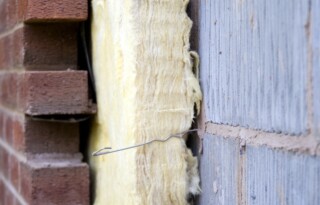Sustainable renovation costs quite a lot, but it is an investment that certainly pays itself back. Installing cavity wall insulation is a must if your house was built before the mid-nineties. But there are a number of other – large and small – investments to make your home more economical and affordable. Here are a few suggestions!
Installing cavity wall insulation
Insulation works best if you treat the whole outer shell of your home: the roof, the walls, the windows and doors, the cellar. Still, cavity wall insulation – insulating the walls by filling the cavities with insulation material – is the most chosen form of insulation. Why? Simply because cavity walls are perfectly suitable for that, and because there is such a lot of wall surface through which warmth can escape.
Ideally, cavity wall insulation is introduced during new construction. Usually glass wool or rock wool are chosen, even though there are other options. You can also insulate the walls at a later stage, during a renovation, but then contractors usually recommend PUR foam, EPS pearls or glass wool flakes.
Is it worth the investment? Do the maths. Cavity wall insulation pays for itself between one and a half to four years. Furthermore, in most cases you take advantage of a grant.
Save even more energy
Is cavity wall insulation not an option for you? Or would you like to do more to make your home energy efficient? Then there are a number of means available:
New windows with double or triple glazing easily provide you with savings of a couple of dozen percent.
Replacing your old central heating installation with a high-yield condensation boiler enables you to continue heating with gas in an economical, responsible way.
Radiators or underfloor heating with low temperature heating offer the same efficiency at a lower cost than ordinary heating.
A ventilation system D with heat recovery delivers a hefty energy saving in well-insulated and airtight houses.
A digital thermostat helps you to manage the temperature in different rooms, so that you do not needlessly heat too much.
